Despite the all-encompassing term ‘Aboriginal art’, artwork produced by Aboriginal people does not constitute a homogenous genre.
Art Gallery
Before the invasion we narrated our identity, spirituality, legends and obligations to the land, through an intricate combination of verbal and visual storytelling. Following European conquest ‘Aboriginal art’ was initially considered in terms of being the artefacts of a primitive race (Fisher 2012).
Nowadays however, ‘Aboriginal art’ is recognised as an evolved and diverse collection of traditional, rural, urban, contemporary and often political personal expression (Fisher 2012). What has to be appreciated is the continuing rich symbolic significance of ‘Aboriginal art’ as an expression of culture, and personal and group identity (Taylor & Veth 2007).
Art is a powerful medium. Visual images can appeal on a more visceral level enhancing understanding and allowing students to aesthetically engage with the experiences and expressions of Aboriginal people. In terms of this resource pack, art could be used to evoke understanding that Aboriginal identity is inseparable from country, family and culture. The topic of ‘Aboriginal art’ has immense scope for assessment items and discussion, particularly in the context of aesthetic, political, ethical, and economic terms.
Included in the gallery are examples of art that we have labelled under the eight sub-categories. The included artworks are not exhaustive or entirely illustrative of the full scope of art produced by Aboriginal people. Also included under the umbrella term ‘Aboriginal art’ and not included here are music, ceremony, language, lore, dance, craft, utensils and weapons, storytelling and theatre.
The original artwork on this site is supplied by Lucy Simpson, Gaawaa Miyay Designs, gaawaamiyay.co.
We are also grateful to the many artists who have allowed us to reproduce their work on the site. They may be used in teaching environments providing the copyright holder is acknowledged.
The work of Lucy Simpson

Artwork by Lucy Simpson, Gaawaa Miyay Designs, gaawaamiyay.co.
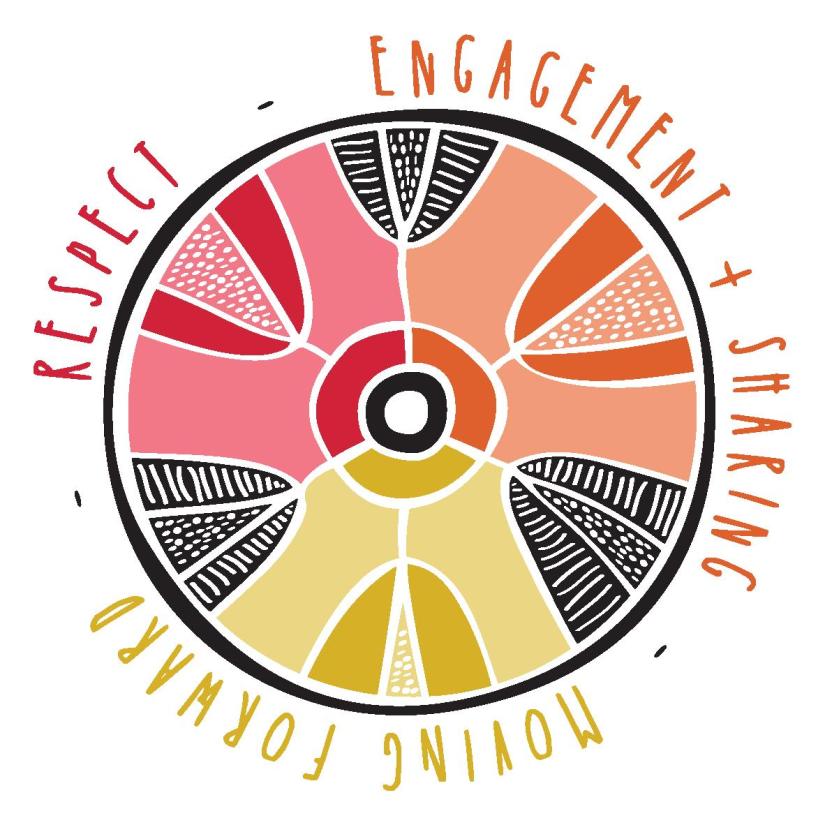
Artwork by Lucy Simpson, Gaawaa Miyay Designs, gaawaamiyay.co.
Other artists' work

Reproduced with the kind permission of the artist: Kirstie Linklater.
These symbols are an indication only and not representative of all artists’ work.
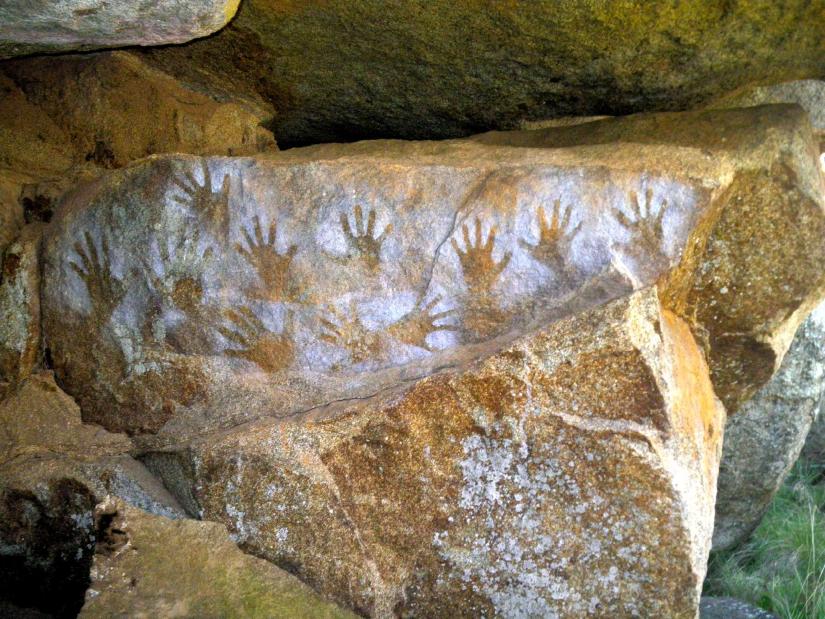
Aboriginal Rock Art reproduced with the kind permission of Don Hitchcock, donsmaps.com.
Hand stencils, a traditional form of Australian Aboriginal painting. Ochre (white in this case) is mixed with water, put in the mouth and blown over the hand placed on the rock.
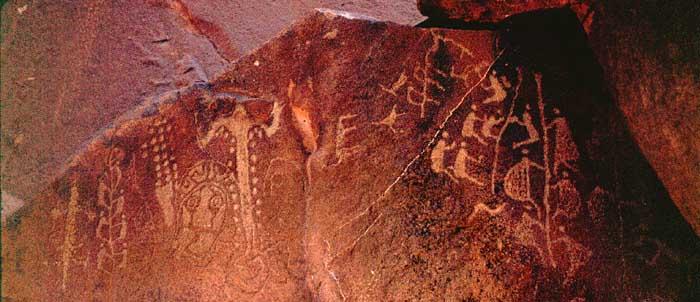
Murujuga petroglyphs. “Copyright by Robert G. Bednarik, with permission by Traditional Custodians”.
Reputed to be the world’s largest complex of petroglyphs, the rock art of the Dampier Archipelago in Western Australia is under severe threat of destruction through industrial development. About 24.4% of the rock art on the main island, Murujuga (Burrup) has been destroyed since 1963, and the remainder has been subjected to slow deterioration through acid rain caused by industrial installations immediately adjacent to the rock art.

Jeff Roberts : Dreamtime. Image used with permission
Today paintings are created using modern-day materials, but the use of traditional symbols and art styles helps to keep this ancient culture alive. The symbols used in contemporary Aboriginal paintings are the same as those found on cave paintings and rock art.

Families Digging Honey Ants by Kathleen Buzzacot. Reproduced with kind permission of the Artist.
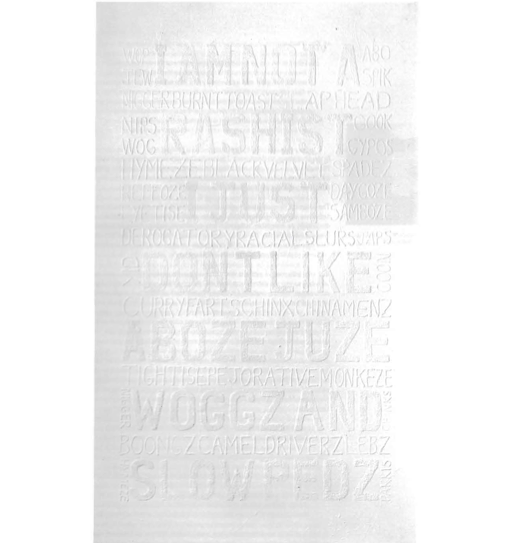
Aussie Aussie Aussie 2002, by Richard Bell. Reproduced with kind permission of the Artist.
Constantly provoking, constantly political. This man is at the crux of social change, fighting for the appreciation of what it means to be an Aboriginal in the 21st century. He is able to get away with often very controversial, aggressive and political statements because he adds an element of humour and beauty to his work. “Aboriginal art” is a topic Bell and many others have discussed and disputed extensively. In an interview with the members of proppaNOW and Archie Moore, the group discusses what defines aboriginal art concluding that it is their colour alone which has given them this label. Ah Kee gives the example of Jackson Pollock who is not referred to as an “American” artist, thus why should Richard Bell and Vernon Ah Kee’s work be defined by their race? For Richard Bell “Aboriginal art” or what he refers to as “ooga booga” is “the stuff made by real Aborigines for white consumption”.
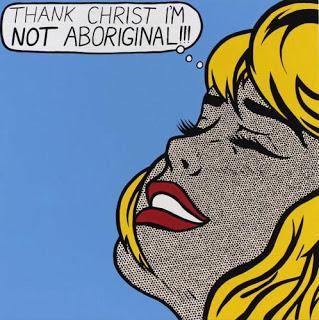
The Peckin Order, by Richard Bell. Reproduced with kind permission of the Artist.

Life on a Mission, by Richard Bell. Reproduced with kind permission of the artist.
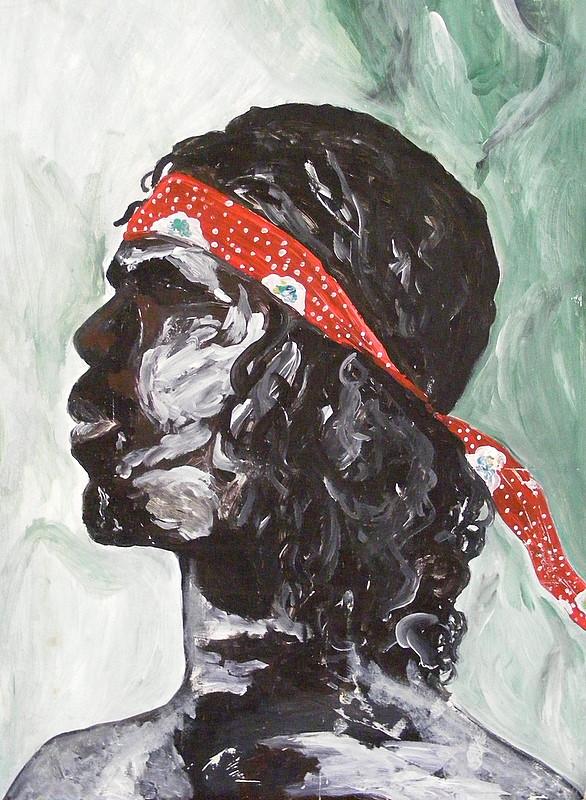
Indigenous Man by Jacqui Stewart. Image provided by the artist. jacquistewart.com.au
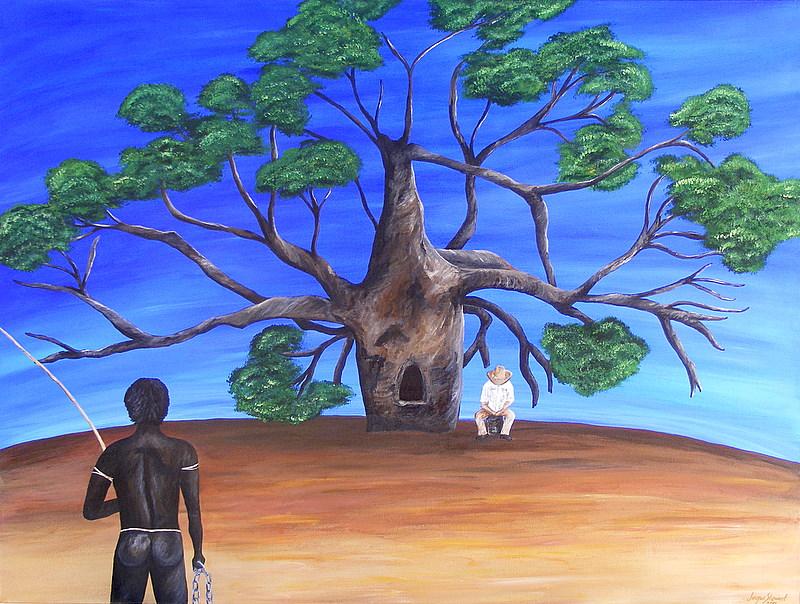
Prison Boab tree: chainless by Jacqui Stewart. Image provided by the artist. jacquistewart.com.au
The Prison Boab Tree is situated just over 23km along the King River Road near Wyndham WA. The tree was used in the 1890′s as an overnight lockup for Indigenous Australian Prisoners on their way to Wyndham. The tree is of cultural significance to the local Aboriginals. The Indigenous man is holding his chains, showing strength, courage and freedom. In the background the prison guard is sitting slumped over displaying remorse.
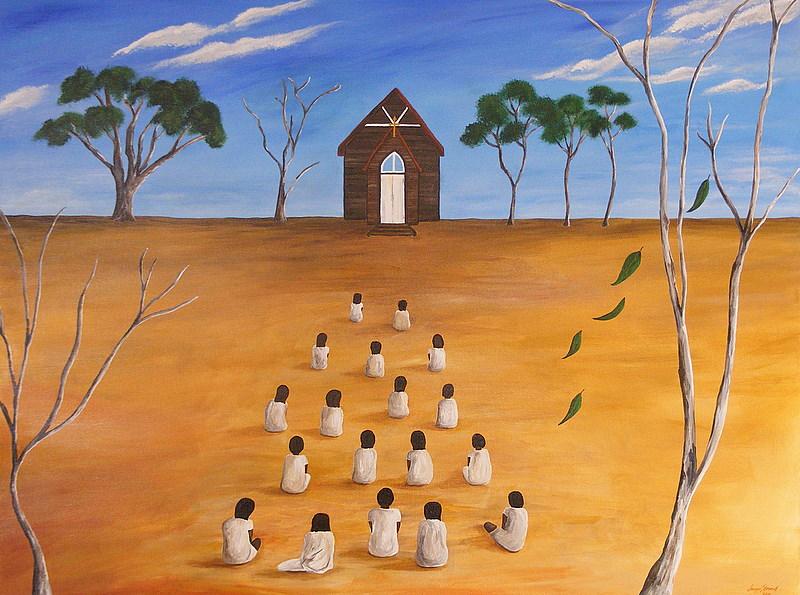
Hope Beyond the Window : a Stolen Generation by Jacqui Stewart. Image provided by the artist. jacquistewart.com.au
Between 1910 and 1970 up to 100,000 Aboriginal children were taken forcibly or under duress from their families by police or welfare officers. Most were under 5 years of age. The painting was influenced by photograph’s of Moore River Native Settlement in WA.
